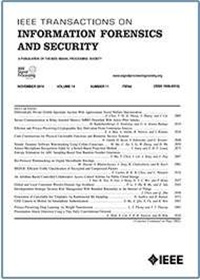Maximizing Area Coverage in Privacy-Preserving Worker Recruitment: A Prior Knowledge-Enhanced Geo-Indistinguishable Approach
IF 8
1区 计算机科学
Q1 COMPUTER SCIENCE, THEORY & METHODS
IEEE Transactions on Information Forensics and Security
Pub Date : 2025-03-09
DOI:10.1109/TIFS.2025.3568163
引用次数: 0
Abstract
Worker recruitment for area coverage maximization, typically requires participants to upload location information, which can deter potential participation without proper protection. While existing studies resort to geo-indistinguishability to address this concern, they primarily focus on either specific task locations (Target Coverage) or operate under pre-defined recruitment quotas for an interested region (Area Coverage). These focuses not only yield suboptimal area coverage when scaled but also fail to leverage valuable prior knowledge in the form of participants’ noisy historical registered locations, to enhance both location obfuscation and worker identification processes. To address these limitations, we present WILTON, which optimizes area coverage under geo-indistinguishability by recruiting the minimum number of participants through the strategic utilization of noisy prior knowledge. In WILTON, to generate obfuscated locations, we propose a probabilistic and weight-aware input perturbation mechanism, which groups and weights prior locations rather than using only personal prior locations. To privately identify the recruited workers, we design a grid-based worker identification method, which provides a worst-case performance guarantee of ratio隐私保护工人招聘中区域覆盖最大化:一种先验知识增强的地理不可区分方法
为了最大限度地扩大区域覆盖范围,工人招聘通常需要参与者上传位置信息,如果没有适当的保护,这可能会阻止潜在的参与者。虽然现有的研究采用地理不可区分性来解决这一问题,但它们主要侧重于特定的任务地点(目标覆盖范围)或根据感兴趣区域的预先定义的招聘配额(区域覆盖范围)进行操作。这些重点不仅在缩放时产生次优区域覆盖,而且无法利用参与者嘈杂的历史注册位置形式的有价值的先验知识,从而增强位置混淆和工人识别过程。为了解决这些限制,我们提出了WILTON,它通过策略性地利用噪声先验知识招募最小数量的参与者来优化地理不可区分下的区域覆盖。在WILTON中,为了生成模糊位置,我们提出了一种概率和权重感知的输入扰动机制,该机制对先验位置进行分组和加权,而不是仅使用个人先验位置。为了私下识别招募的工人,我们设计了一种基于网格的工人识别方法,该方法提供了最优的最坏情况性能保证比率$1 - \frac {1}{e}$。我们对WILTON的私密性、实用性和复杂性保证进行了理论分析。在两个真实数据集和一个合成数据集上的实验结果表明,WILTON在区域覆盖改善方面至少超过了最先进的8%。
本文章由计算机程序翻译,如有差异,请以英文原文为准。
求助全文
约1分钟内获得全文
求助全文
来源期刊

IEEE Transactions on Information Forensics and Security
工程技术-工程:电子与电气
CiteScore
14.40
自引率
7.40%
发文量
234
审稿时长
6.5 months
期刊介绍:
The IEEE Transactions on Information Forensics and Security covers the sciences, technologies, and applications relating to information forensics, information security, biometrics, surveillance and systems applications that incorporate these features
 求助内容:
求助内容: 应助结果提醒方式:
应助结果提醒方式:


